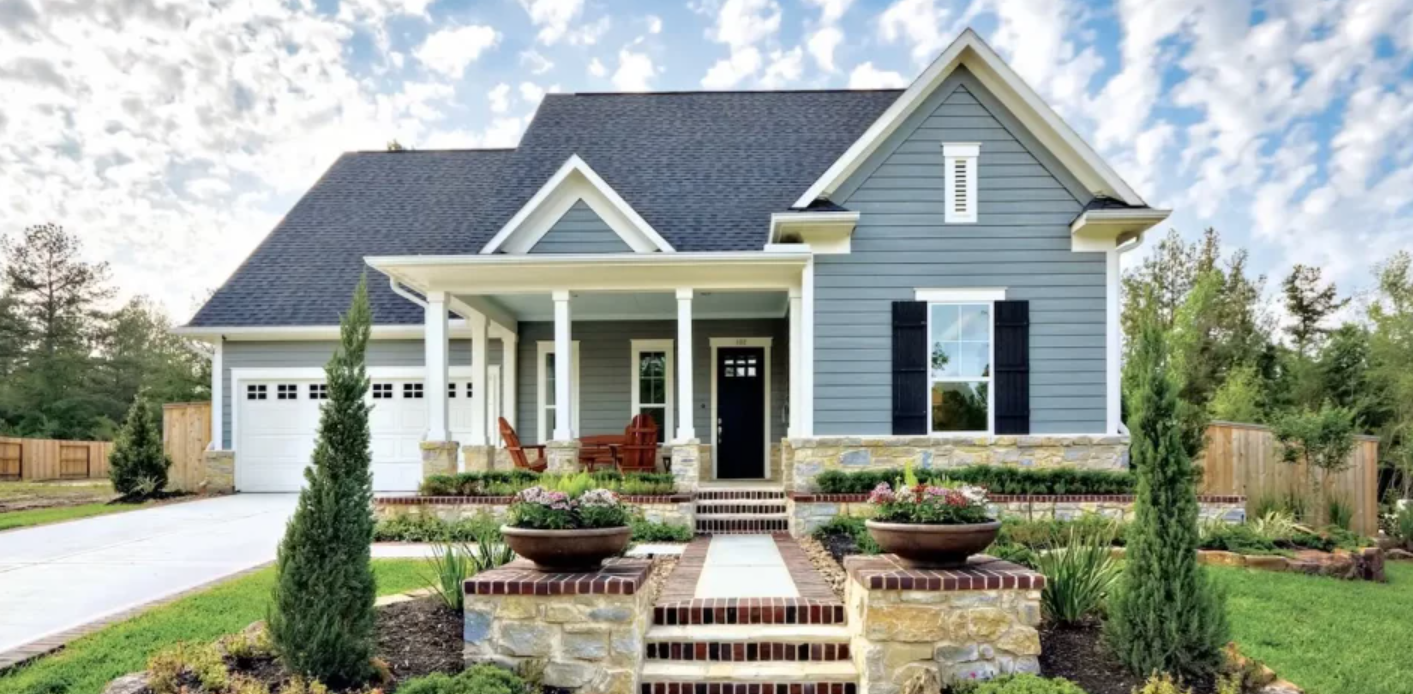As with every design trend, there are many interpretations of “vintage.” While some see a return to the opulent Victorian era, others see a more modern variation in neutral palettes and industrial accents. The common thread among these different interpretations is an emphasis on reclaimed materials, artisanal details, and an aged or worn appearance.
These ideas aren’t new architects and designers have been using them for years. We’re seeing a resurgence of these ideas with a twist. Today’s consumers are generally much more aware of where their goods come from, the processes used in their production, and the materials used in their construction. People are also more aware of the environmental impact of their purchases. These factors have led to a desire for products that emphasize authenticity, craftsmanship, high-quality materials, and sustainability. Here are seven examples of how vintage influences are applied in contemporary architecture.
1. Cottagecore Coziness
Cottagecore is a new approach to the classic cottage style. It combines the traditional aesthetic of a cottage with modern design sensibilities. This approach promotes a return to classic cottage design with a contemporary twist.
The interiors are simple, functional, and comfortable. They feature natural materials such as reclaimed wood, stone, and metal. These materials are used throughout the interior, including the kitchen, bathroom, and bedroom. While Cottagecore is often associated with modern homes, it is also used in historical renovations to renew older buildings and add a new layer of authenticity to an older property. Trendy barn doors are used to add a classic touch to the space.
2. Gingham Prints
Gingham is a traditional fabric that has been popular for decades. It is typically seen on clothing, linens, and tablecloths. Today, it has made a comeback in the home. Gingham prints are being used in the kitchen, bath, and bedroom. They feature classic details such as stripes and plaids.
These prints are also used in contemporary interiors as an alternative to wallpaper. In addition to their classic appeal, gingham prints are durable and easy to clean. They come in many different patterns and textures, allowing them to be used indoors and out of doors.
3. Color Blocking
Color blocking is a trend that has been gaining popularity for the past few years. It involves placing several different colors of paint on the same wall. The result combines bright primary colors, bold and vivid hues, and soft pastels. Color blocking can be seen in many homes, such as urban lofts, contemporary beach houses, and country cottages.
Color Blocking is being used to add a modern twist to traditional architecture. For example, it was used to create the interior of this home in London which features a contemporary architectural style but with a nod to conventional architecture through color blocking.
4. Houseplants
Houseplants are typically seen as a decorative element, but they can also be used to add a little life to a home. They have been used to create the look of indoor gardens in many homes. In addition, they are also being used in interiors to provide color and texture in the space. Plants are being used in homes in London to create soft and natural colors in the space.
5. Seventies Style
The seventies were a time of experimentation with fashion. The style that emerged from this period is known as the seventies style. It uses bold colors and patterns, including paisley prints, leopard-skin prints, and pinstripe designs. It incorporates various textures and materials such as velvet, suede, and leather.
6. Vintage Bakelite Furniture
Bakelite is a type of plastic used in the 1930s to 1940s. It is often referred to as a vintage material because it has been used to create furniture in this era. It is a very retro and unique material that has been around for many years. It is often used in creating vintage furniture.
7. Flowing Shapes
The flowing shapes trend involves the use of geometric shapes in the creation of interiors. This contemporary approach to interior design is created using simple and basic shapes. They are usually placed in the form of floor-to-ceiling panels, which can create a very modern look.
Many different interior design trends are being used to create unique and modern interiors. Although these trends are still in their early stages, we will likely see them become more popular over the next few years.

